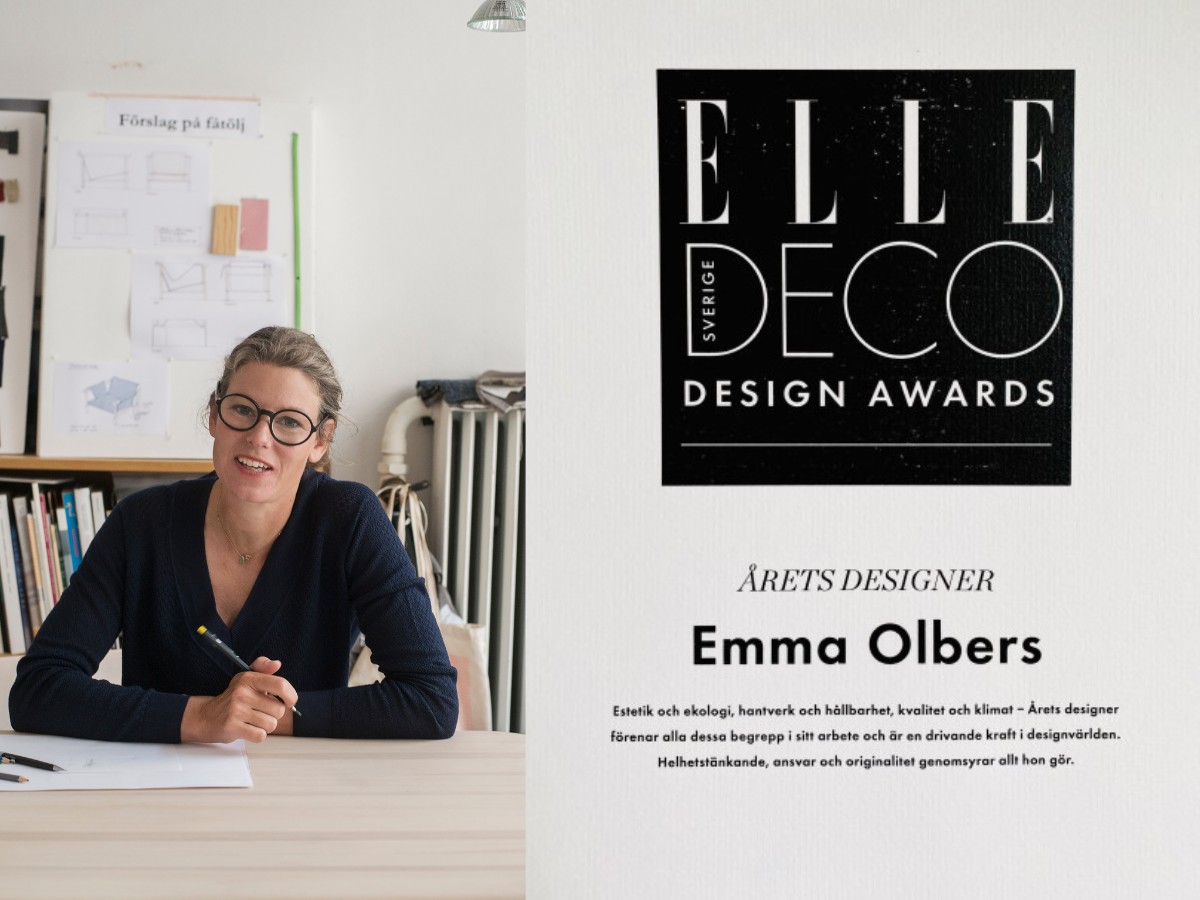
Aesthetics and ecology, craftsmanship and sustainability, quality and climate – This year’s designer unites all these concepts in her work and is a driving force in the design world. Comprehensive thinking, responsibility and originality permeate everything she does, says Elle Deco Award jury.
Interview of Emma by Elle Deco:
Many people talk about sustainable design but few are as read and as consistent in practice as designer Emma Olbers. In collaboration with manufacturers such as Tre Sekel, Asplund and Eldvarm, she is pushing for sustainable choices of materials and production methods. Late last fall, her decoration for the Old Library at the National Museum received the award as this year’s decoration of German AD Magazine under the theme Sustainable Elegance. In collaboration with Asplund, she produced the Library mat for the project, made from ecologically sustainable Tencel.
“I grew up on agriculture and have always been interested in environmental issues. In 2008, I attended a course at Sustainable Fashion Academy that gave me a deeper understanding”, says Emma.
CREATED A COLLECTION OF WOOD
With the exhibition Stockholm Wood at the Design Gallery 2012, her environmental commitment began to reach a wider audience. Since the materials on average account for about half of a furniture’s total greenhouse gas emissions, she chose to investigate which local materials were available and created a small collection of wood harvested in central Stockholm.
Four years later she did the trend show ‘Where does it come from, where does it go?’ at the Stockholm Furniture Fair. Then she took help from the IVL Swedish Environmental Institute to calculate greenhouse gas emissions per kilo in the materials used in the exhibition, a kind of basic research that she still returns to in her projects.
Emma often works with low-carbon materials such as wood and bamboo and likes to use traditional craft methods. Of course, the larger the production, the greater the concrete effect of her environmental work. In preparation for a new series of bamboo lamps for Ikea, she traveled to Vietnam to explore how the material could be better utilized. The result was that bamboo with greater colour variation could be used, less material was discarded and the carbon dioxide impression per lamp decreased. An unimportant bonus is that the environmental expertise of the furniture giant increased on the purchase.
“One problem in the design industry is that everything should look so homogeneous. That’s not the case in nature. The natural is both more beautiful and perceived as more exclusive”, she says.
In recent years, Emma has seen environmental issues come up further and further on the agenda, but she is far from happy with what is actually being done.
“Compared to ten years ago, awareness of the climate impact of the design world has increased greatly, especially in the past year. But now it must be a little workshop too!”
By: Anders Bergmark.


